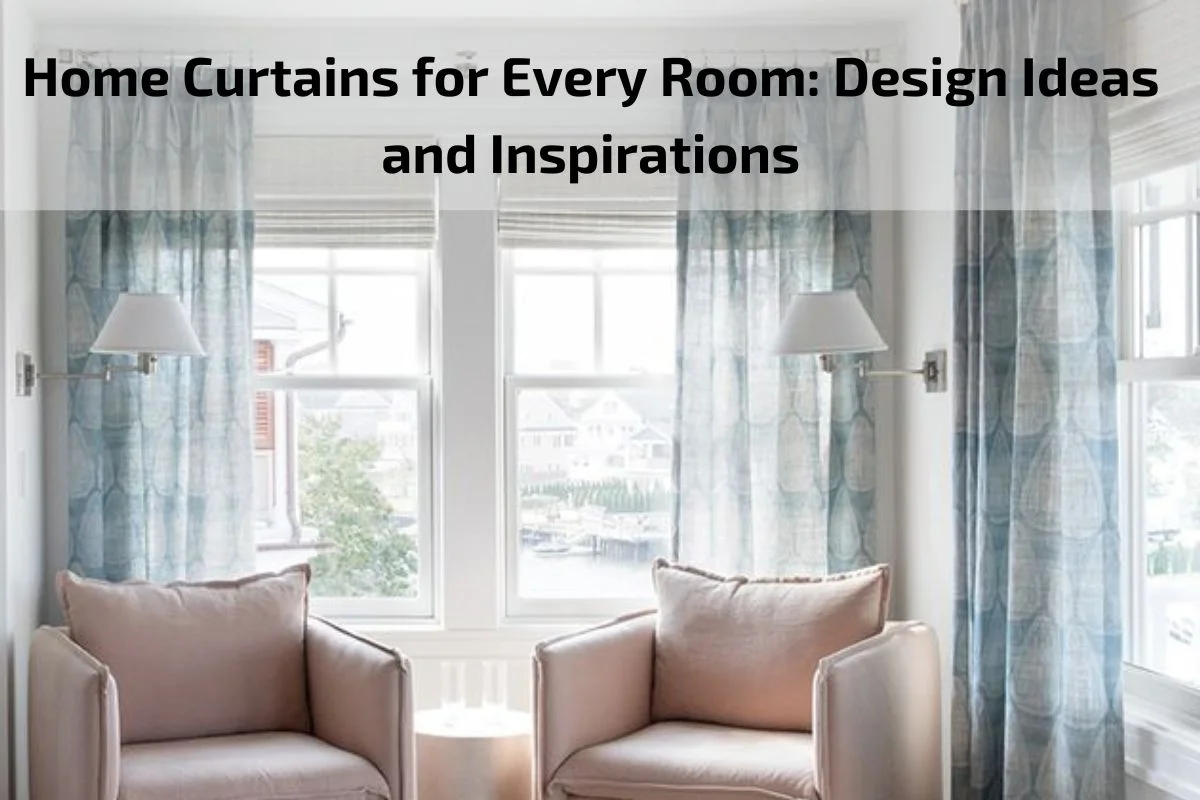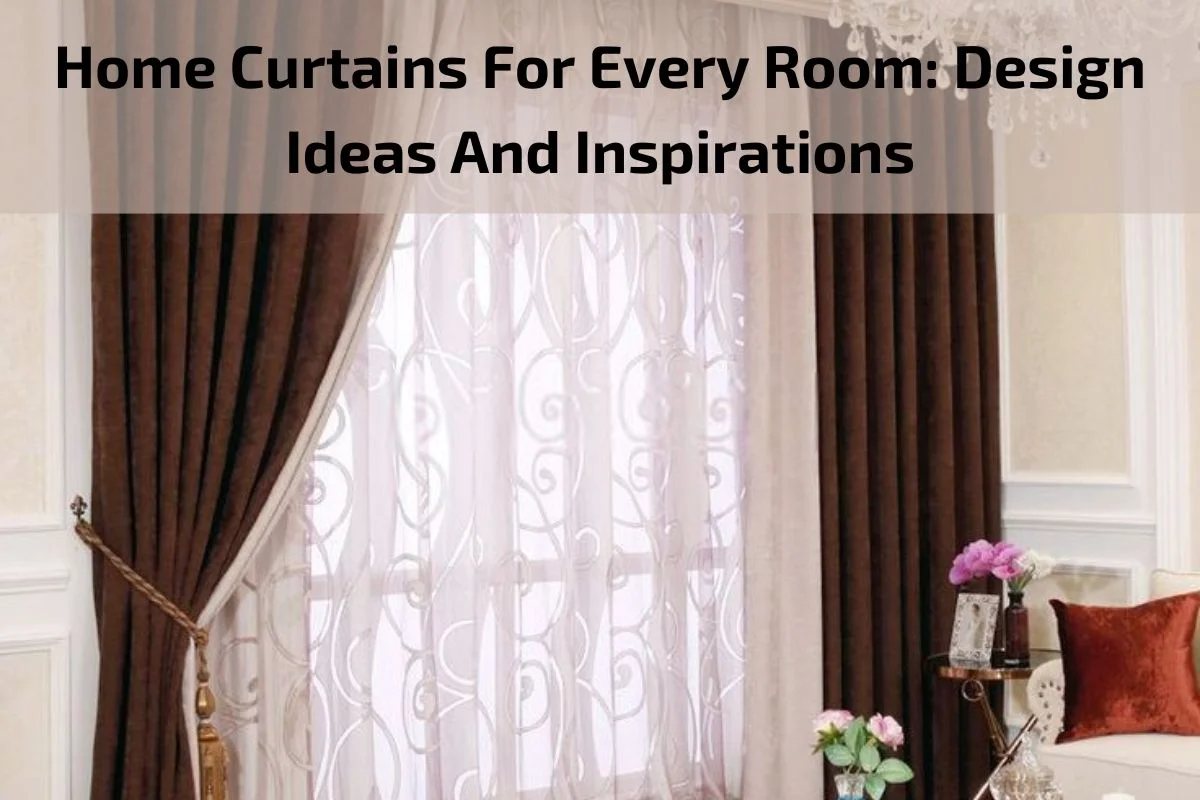
Curtains are more than just window dressings; they’re an integral part of home decor that can transform the look and feel of any room. From adding a touch of elegance to providing privacy and light control, home curtains play a vital role in enhancing the ambiance and functionality of living spaces. “Home Curtains for Every Room: Design Ideas and Inspirations” is your guide to exploring creative ways to incorporate curtains into different rooms of your home, from the living room to the bedroom and beyond.
In this article, we’ll delve into a variety of design ideas and inspirations for using curtains to elevate the style and atmosphere of each room. Whether you prefer classic draperies, modern sheers, or DIY curtain projects, we’ll explore a range of options to suit every taste and budget. From choosing the right fabric and color to selecting the perfect curtain hardware and accessories, we’ll cover everything you need to know to create stunning window treatments that complement your home decor and reflect your personal style.
Join us as we embark on a journey through the world of home curtains, exploring design ideas, practical considerations, and inspirational examples to help you make informed decisions and transform your windows into focal points of beauty and elegance in every room of your home.
Brief overview of the importance of home curtains in interior design.
Curtains play a pivotal role in interior design by adding functionality, aesthetics, and personality to a space. They serve as versatile elements that can enhance the overall ambiance and visual appeal of any room. Here’s a brief overview of the importance of home curtains in interior design:
Privacy: Curtains offer an essential layer of privacy, allowing homeowners to control visibility from outside while maintaining a comfortable level of seclusion within the home.
Light Control: Curtains provide control over natural light, allowing residents to adjust brightness levels according to their preferences. This feature is crucial for creating different atmospheres throughout the day and managing glare and heat from sunlight.
Temperature Regulation: Beyond aesthetics, curtains also contribute to temperature regulation by insulating windows. During colder months, they help retain heat indoors, while in warmer weather, they can block out excess sunlight to keep interiors cool and comfortable.
Style and Aesthetics: Home curtains serve as decorative elements that add texture, color, and visual interest to a room. They can complement existing décor styles or serve as focal points, enhancing the overall aesthetic appeal of the space.
Advantages and Disadvantages of Home Curtains
Advantages:
Privacy: Home curtains provide a sense of privacy, allowing occupants to control visibility into their living spaces. This is particularly important for ground floor rooms or homes in densely populated areas.
Light Control: Curtains offer the flexibility to adjust natural light levels in a room. By opening or closing them, occupants can regulate brightness, manage glare, and create the desired ambiance throughout the day.
Temperature Regulation: Curtains contribute to energy efficiency by insulating windows. In colder months, they help retain heat indoors, while in warmer weather, they can block out sunlight to keep interiors cooler, reducing the need for heating or cooling.
Aesthetic Enhancement: Home curtains are decorative elements that add texture, color, and visual interest to a room. They can complement existing décor styles, serve as focal points, or even act as artwork, enhancing the overall aesthetic appeal of the space.
Versatility: With a wide range of styles, fabrics, and designs available, curtains offer versatility in design and functionality. They can be tailored to suit different room sizes, shapes, and purposes, allowing homeowners to customize their window treatments according to their preferences.
Disadvantages:
Maintenance: Curtains require regular cleaning and upkeep to prevent dust buildup, stains, and damage. Depending on the fabric and design, some curtains may be more challenging to clean and maintain than others.
Limited Light Blocking: While curtains offer light control, they may not provide complete blackout capabilities, especially if they are made of lightweight or sheer fabrics. For rooms where total darkness is desired, additional window treatments like blackout blinds or shades may be necessary.
Space Considerations: Curtains require adequate wall space for mounting hardware and clearance for opening and closing. In smaller rooms or those with limited wall space, bulky or elaborate curtain designs may not be practical.
Allergen Accumulation: Dust, pet dander, and other allergens can accumulate on curtains over time, posing a potential health risk for individuals with allergies or respiratory issues. Regular cleaning and dusting can help mitigate this concern.
Cost: Depending on the quality, fabric, and design, curtains can be a significant investment. High-quality materials and custom designs may come with a higher price tag, which may be a deterrent for budget-conscious homeowners.
Types of Home Curtains
Drapes: Drapes are heavyweight curtains typically made of thick fabric that hangs from a rod or track. They offer a luxurious and formal look, often reaching from ceiling to floor, making them ideal for grand living rooms, dining rooms, or bedrooms. Drapes come in various styles, including pinch pleat, grommet, and rod pocket, and are available in a wide range of fabrics, colors, and patterns.
Sheer Curtains: Sheer curtains are lightweight, translucent curtains that allow ample natural light to filter through while providing minimal privacy. They add an airy and ethereal quality to a room, making them perfect for spaces where a soft and delicate ambiance is desired, such as living rooms, kitchens, or sunrooms. Sheer curtains come in various textures, including voile, chiffon, and organza, and are available in a spectrum of colors and patterns.
Roman Shades: Roman shades are fabric window coverings that fold up accordion-style when raised and lay flat when lowered. They offer a clean and tailored look, making them suitable for both modern and traditional interiors. Roman shades come in a variety of styles, including flat, hobbled, and waterfall, and can be customized with different fabrics, linings, and decorative trims to complement any décor.
Valances: Valances are decorative window treatments that hang across the top of a window frame. They add a finishing touch to curtains or blinds, softening the look of the window and concealing mounting hardware. Valances come in a variety of styles, including swag, scarf, and cornice, and can be made from fabric, wood, or metal, offering endless design possibilities for enhancing the aesthetic appeal of a room.
Stylish Design Ideas for Home Curtains
Layered Look: Create visual interest and depth by layering different types of curtains or window treatments. Pair sheer curtains with heavier drapes or Roman shades to achieve a sophisticated and dimensional look.
Pattern Mixing: Experiment with mixing and matching patterns to add personality and charm to your space. Combine bold geometric prints with delicate florals or classic stripes with abstract designs for a dynamic and eclectic vibe.
Statement Hardware: Elevate the look of your curtains with decorative curtain rods, finials, or tiebacks. Choose hardware in metallic finishes like brass, chrome, or matte black to add a touch of glamour and sophistication to your windows.
Floor-to-Ceiling Curtains: Emphasize the height of your room and create a sense of grandeur by installing curtains that extend from floor to ceiling. This dramatic style elongates the space, making it feel larger and more luxurious.
Color Blocking: Experiment with color blocking techniques by using curtains in contrasting or complementary colors to create visual interest and define different areas within a room. Opt for bold hues for a statement look or muted tones for a subtle, sophisticated effect.
Textured Fabrics: Incorporate textured fabrics like velvet, linen, or jacquard to add depth and richness to your curtains. Textured curtains not only enhance the tactile appeal of a room but also provide visual warmth and coziness.
Custom Prints: Personalize your curtains with custom prints or artwork that reflect your individual style and interests. Consider printing family photos, favorite quotes, or nature-inspired motifs onto fabric to create unique and meaningful window treatments.
Tie-Dye or Shibori: Embrace the bohemian trend with tie-dye or shibori curtains. These artisanal dyeing techniques add a playful and whimsical touch to your décor, infusing your space with a sense of creativity and free-spirited charm.
Ombre Effect: Create a gradient ombre effect by using curtains in varying shades of the same color. This subtle transition from light to dark adds visual interest and depth to your windows, enhancing the overall aesthetic appeal of your space.
Mixed Materials: Combine different materials like fabric, wood, or metal to create unique and eclectic curtain designs. Mix and match textures and finishes for a curated and layered look that adds character and personality to your home.
Installation and Maintenance Tips
Proper Installation:
- Ensure curtain rods or tracks are securely installed to support the weight of the curtains.
- Use appropriate mounting hardware and follow manufacturer’s instructions for installation.
- Double-check measurements and spacing to ensure curtains hang evenly and at the desired height.
Hang Curtains Correctly:
- Hang curtains slightly above the window frame to create the illusion of height and make the room feel larger.
- Allow curtains to extend beyond the window frame on each side to maximize natural light when curtains are open.
- Ensure curtains touch the floor or hover slightly above for a tailored look. Use fabric weights or hemming tape to adjust length if necessary.
Regular Cleaning and Maintenance:
- Vacuum curtains regularly using a brush attachment to remove dust and debris. Pay attention to pleats, folds, and hems.
- Spot clean stains promptly with a mild detergent and warm water. Avoid rubbing or scrubbing vigorously to prevent damage to the fabric.
- Consider professional cleaning for heavily soiled or delicate fabrics, such as silk or velvet, following care instructions provided by the manufacturer.
Washing Guidelines:
- Check fabric care labels for washing instructions before laundering curtains.
- Machine wash curtains on a gentle cycle using cold water and mild detergent, if suitable for the fabric type.
- Avoid using bleach or harsh chemicals that may weaken or discolor the fabric.
- Air dry curtains to prevent shrinkage or damage from high heat in the dryer. Hang them while still slightly damp to reduce wrinkles.
Ironing and Steaming:
- Iron curtains on the appropriate setting for the fabric to smooth out wrinkles and creases. Use a pressing cloth to protect delicate fabrics.
- Alternatively, use a handheld steamer to remove wrinkles without direct contact with the fabric. Hold the steamer several inches away and move it in a sweeping motion for best results.
Rotate and Rearrange:
- Rotate curtains periodically to distribute sunlight exposure evenly and prevent fading or discoloration.
- Experiment with different curtain arrangements or styles to refresh the look of your space and prevent wear and tear in high-traffic areas.
Conclusion
In conclusion, home curtains are not just practical window coverings but essential elements of interior design that contribute to the overall aesthetic appeal and functionality of a space. From providing privacy and controlling light to adding style and warmth, curtains play a crucial role in creating comfortable and inviting living environments.



